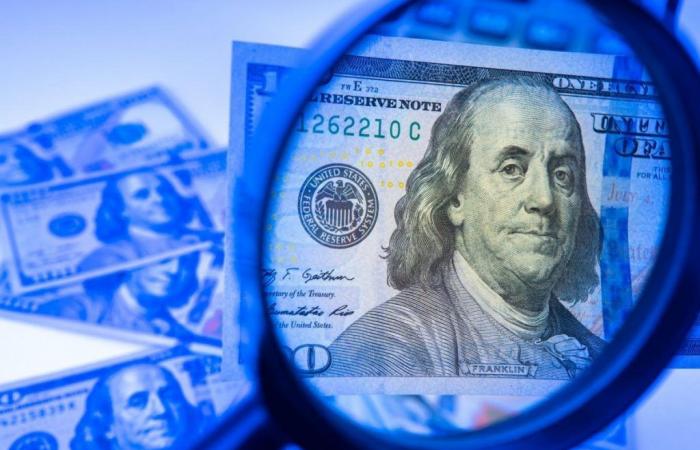Specialists explain the various factors that determine the increase that generates concern in the market.
The “blue” dollar reached a new record yesterday, standing at $1,330 for sale, that is, it rose $30 (+2.3%) after the last holiday and accumulated about $105 (+8.6%) so far of the month, a percentage that far exceeds inflation.
The climb came after the debate of the Bases law and the fiscal package, as well as the request to accelerate the “crawling-peg” of the International Monetary Fund (IMF). Meanwhile, the gap with the official one is already at 46.4%, and the Government insists that it is not going to devalue again.
According to specialists, this escalation in a short time responds to temporary and seasonal issues. They agree that seasonally the period from mid-June to early July is bullish for the parallel dollar. This is explained by the payment of bonuses.
The Economist Gustavo Quintana He added factors such as winter holidays and the value of the tourist dollar ($1,483.20), which “stimulates demand in the blue market” of those Argentines who travel to another country. This is because “both expenses abroad and consumption in dollars with a card should be paid with MEP or blue,” according to what he said in Ámbito.
At the same time, negative real rates also encourage the parallel market, since the fixed-term rate is close to 2.9% nominal and that of Lecap is at 4.25%, compared to an inflation that is projected between 5% and 6% monthly.
For Martin Mazza, Director of MM Investments, the recent increase in blue “is mainly due to the coverage due to the short holiday week and the greater demand when operations reopened.” For the expert, there is a “relative lag in the price of the dollar compared to inflation,” while “negative real interest rates encourage dollarization.”
The influence of the IMF
Likewise, the market is concerned about the notorious sales of dollars that the Central Bank has been making in recent weeks, at the height of the liquidation period for the large harvest of the countryside. That is, in a scenario in which currencies should be added, they are being sold.
Furthermore, the idea is being reinforced, based on the messages in recent days from the International Monetary Fund (IMF) to the Government, that there is an exchange delay that results in soybean growers not being encouraged to sell their grains.
This volatility generates a re-dollarization of harvest field sales, as a form of exchange hedging.
“I believe that there is official settlement and re-dollarization of the harvest flows towards the MEP dollar and in cash with settlement. The informal bill is moving accordingly. So if this week there is good news with the Bases Law and the package fiscal, there should be a little less preventive demand out there,” he said Fernando Baereconomist at the consulting firm Quantum, to iProfesional.
“The IMF thing may have brought some noise,” he considered. Salvador Vitelli, economist at Romano Group. “I see the volatility of the blue linked to the comings and goings with the IMF regarding what they call the currency competition model.”
The IMF also calls for the elimination of the export dollar and a greater devaluation, so there is uncertainty in these aspects and that pushes up the value.
Exchange delay
The market’s idea that there is a delay in the price of the dollar due to inflation also weighs. Jorge Colinaan economist at Idesa, said: “It can be said that the blue is not rising, but is accompanying inflation. The parallel dollar today at $1,300 is equivalent, in real terms adjusted for inflation, to the dollar in February which was at $1,000, in nominal terms. In fact, if we went to December, where it was also $1,000, adjusted by the consumer price index (CPI) it would be equivalent to $1,800 now.”
Meanwhile, the economist Federico Glustein predicted that the blue dollar could reach $1,350 (a value close to what it currently is), after the increases in recent weeks. Meanwhile, Quintana was more confident that at some point a decline will be observed, with activity normalized after the short week.


